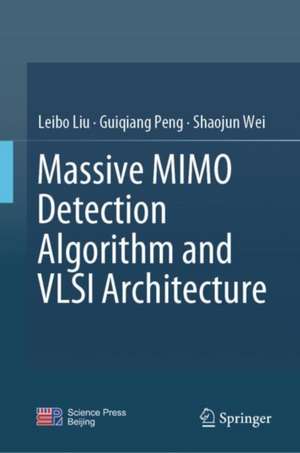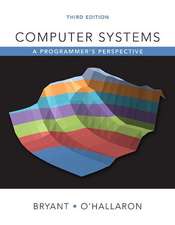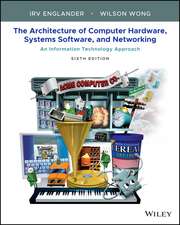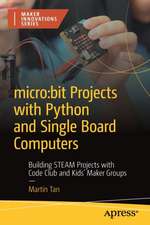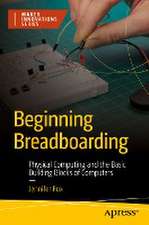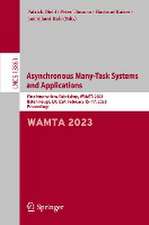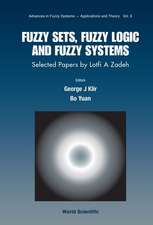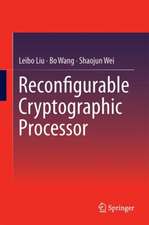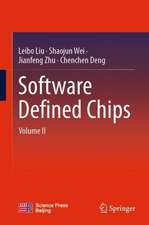Massive MIMO Detection Algorithm and VLSI Architecture
Autor Leibo Liu, Guiqiang Peng, Shaojun Weien Limba Engleză Paperback – 28 noi 2020
After introducing massive MIMO detection algorithms and circuit architectures, the book describes the ASIC implementation for verifying the massive MIMO detection. In turn, it provides detailed information on the proposed reconfigurable architecture: the data path and configuration path for massive MIMO detection algorithms, including the processing unit, interconnections, storage mechanism, configuration information format, and configuration method.
| Toate formatele și edițiile | Preț | Express |
|---|---|---|
| Paperback (1) | 648.26 lei 6-8 săpt. | |
| Springer Nature Singapore – 28 noi 2020 | 648.26 lei 6-8 săpt. | |
| Hardback (1) | 654.70 lei 6-8 săpt. | |
| Springer Nature Singapore – 5 mar 2019 | 654.70 lei 6-8 săpt. |
Preț: 648.26 lei
Preț vechi: 810.33 lei
-20% Nou
Puncte Express: 972
Preț estimativ în valută:
124.06€ • 129.04$ • 102.42£
124.06€ • 129.04$ • 102.42£
Carte tipărită la comandă
Livrare economică 15-29 aprilie
Preluare comenzi: 021 569.72.76
Specificații
ISBN-13: 9789811363641
ISBN-10: 9811363641
Pagini: 336
Ilustrații: XVI, 336 p. 186 illus., 120 illus. in color.
Dimensiuni: 155 x 235 mm
Greutate: 0.49 kg
Ediția:1st ed. 2019
Editura: Springer Nature Singapore
Colecția Springer
Locul publicării:Singapore, Singapore
ISBN-10: 9811363641
Pagini: 336
Ilustrații: XVI, 336 p. 186 illus., 120 illus. in color.
Dimensiuni: 155 x 235 mm
Greutate: 0.49 kg
Ediția:1st ed. 2019
Editura: Springer Nature Singapore
Colecția Springer
Locul publicării:Singapore, Singapore
Cuprins
Chapter 1 Introduction.- Chapter 2 Linear Massive MIMO Detection Algorithm.- Chapter 3 Architecture of Linear Massive MIMO Detection.- Chapter 4 Nonlinear Massive MIMO Signal Detection Algorithm.- Chapter 5 Hardware Architecture for Nonlinear Massive MIMO Detection.- Chapter 6 Dynamic Reconfigurable Chips for Massive MIMO Detection.- Chapter 7 Prospect of the VLSI Architecture for Massive MIMO Detection.
Notă biografică
Professor Leibo Liu received his bachelor's and doctoral degrees in Electronic Engineering and Microelectronics from Tsinghua University in 1999 and 2004, respectively. He subsequently taught at the European Microelectronics Center, Massachusetts Institute of Technology, and the University of Oxford (in 2006, 2013 and 2017). He is currently a Tsinghua Microelectronics Director (Tenured Professor). He has long been engaged in reconfigurable computing and has supervised more than 10 projects including key projects of the 863 Program (Chief Expert), National Natural Science Foundation, Basic Research Project of the National Defense Science and Technology Bureau, and major international cooperation projects. He has published more than 80 SCI-indexed papers and more than 60 EI-indexed papers.
In the course of his career, he has won e.g. the National Technology Invention Award (second prize), the China Patent Gold Award, the Ministry of Education Technology Invention Award (firstprize), and the Jiangxi Science and Technology Progress Award (second prize).
In the course of his career, he has won e.g. the National Technology Invention Award (second prize), the China Patent Gold Award, the Ministry of Education Technology Invention Award (firstprize), and the Jiangxi Science and Technology Progress Award (second prize).
Textul de pe ultima copertă
This book introduces readers to a reconfigurable chip architecture for future wireless communication systems, such as 5G and beyond. The proposed architecture perfectly meets the demands for future mobile communication solutions to support different standards, algorithms, and antenna sizes, and to accommodate the evolution of standards and algorithms. It employs massive MIMO detection algorithms, which combine the advantages of low complexity and high parallelism, and can fully meet the requirements for detection accuracy. Further, the architecture is implemented using ASIC, which offers high energy efficiency, high area efficiency and low detection error.
After introducing massive MIMO detection algorithms and circuit architectures, the book describes the ASIC implementation for verifying the massive MIMO detection. In turn, it provides detailed information on the proposed reconfigurable architecture: the data path and configuration path for massive MIMO detection algorithms, including the processing unit, interconnections, storage mechanism, configuration information format, and configuration method.
After introducing massive MIMO detection algorithms and circuit architectures, the book describes the ASIC implementation for verifying the massive MIMO detection. In turn, it provides detailed information on the proposed reconfigurable architecture: the data path and configuration path for massive MIMO detection algorithms, including the processing unit, interconnections, storage mechanism, configuration information format, and configuration method.
Caracteristici
Present a dynamic and reconfigurable architecture for future wireless communication systems, e.g. 5G and beyond Introduces massive multiple-input multiple-output (MIMO) technology, which can improve network capacity, enhance network robustness and reduce communication delays Reviews various implementations of the architecture and explains the ASIC-based approach, which offers high energy efficiency, high area efficiency and low detection error
